Case 7
- Soviet Union
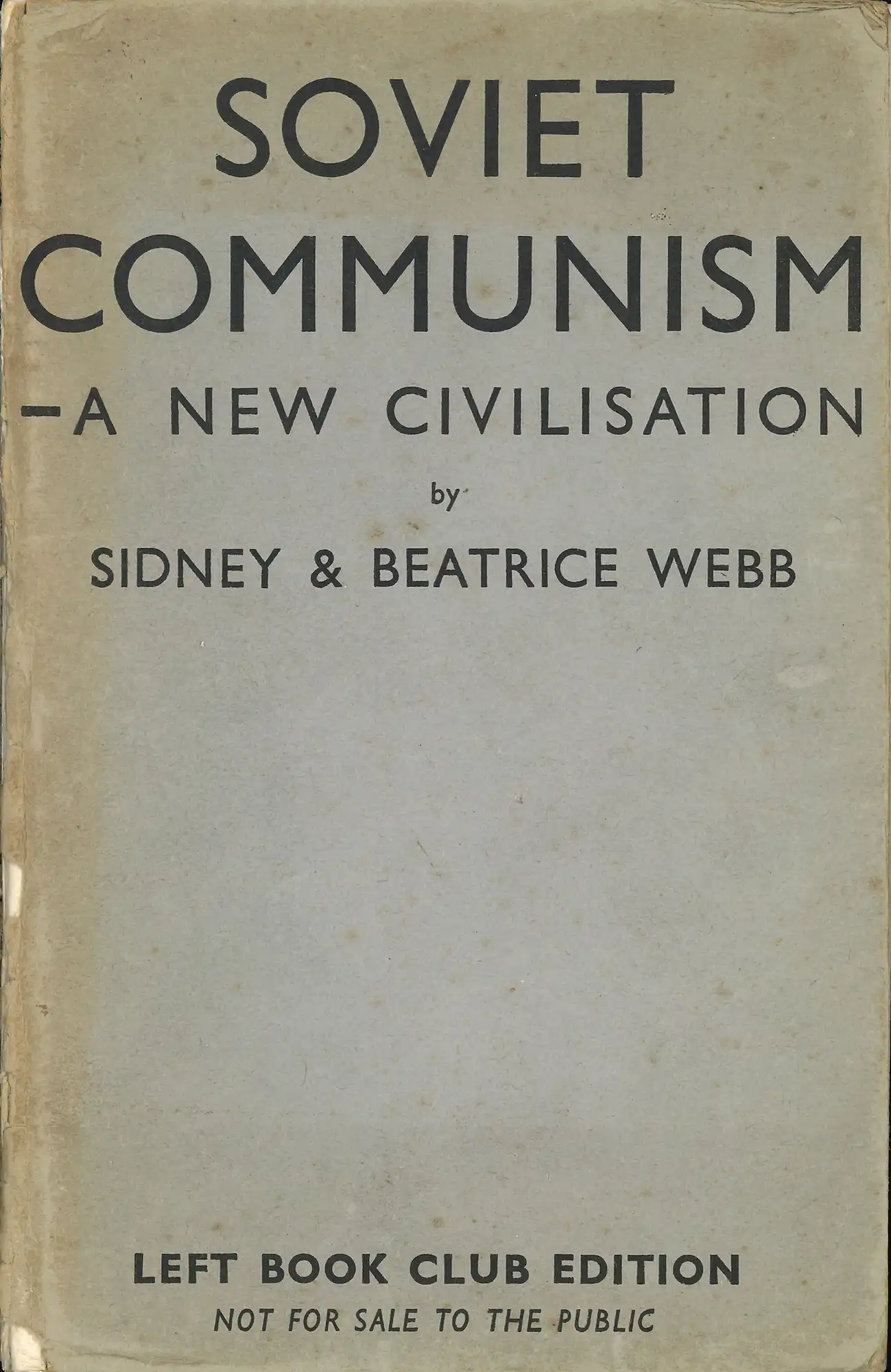
Sidney and Beatrice Webb, Soviet communism: a new civilisation, vol.1. (1937). LBC 335.4 WEB V.1
No book, perhaps, exemplifies the naïve and uncritical attitude of Gollancz and the LBC to the Soviet Union than the Webbs’ Soviet Communism – a new civilisation? (1935),the second edition of which was issued by the Club without the question mark. Disillusioned by the deepening capitalist crisis and the realities of the Labour Party in power, the Webbs – Sidney (1859-1947) and Beatrice (1858-1943) – started to look towards the USSR as a possible model. They toured for two months in 1932. Taking their guides at face value and official statistics in good faith, the two great Fabian socialists ended up writing a paean to a Soviet Union that existed only in their imaginations. It has been variously described as ‘the most preposterous book ever written about Russia’ (A.J.P. Taylor) and ‘pure Soviet propaganda at its most mendacious’ (Al Richardson). The Molotov-Ribbentrop Pact ended Gollancz’s uncritical attitude but not the Webbs, who still managed to overcome their doubts.

Sidney and Beatrice Webb, Soviet communism: a new civilisation, vol.1. (1937). LBC 335.4 WEB V.1
Open image in new window
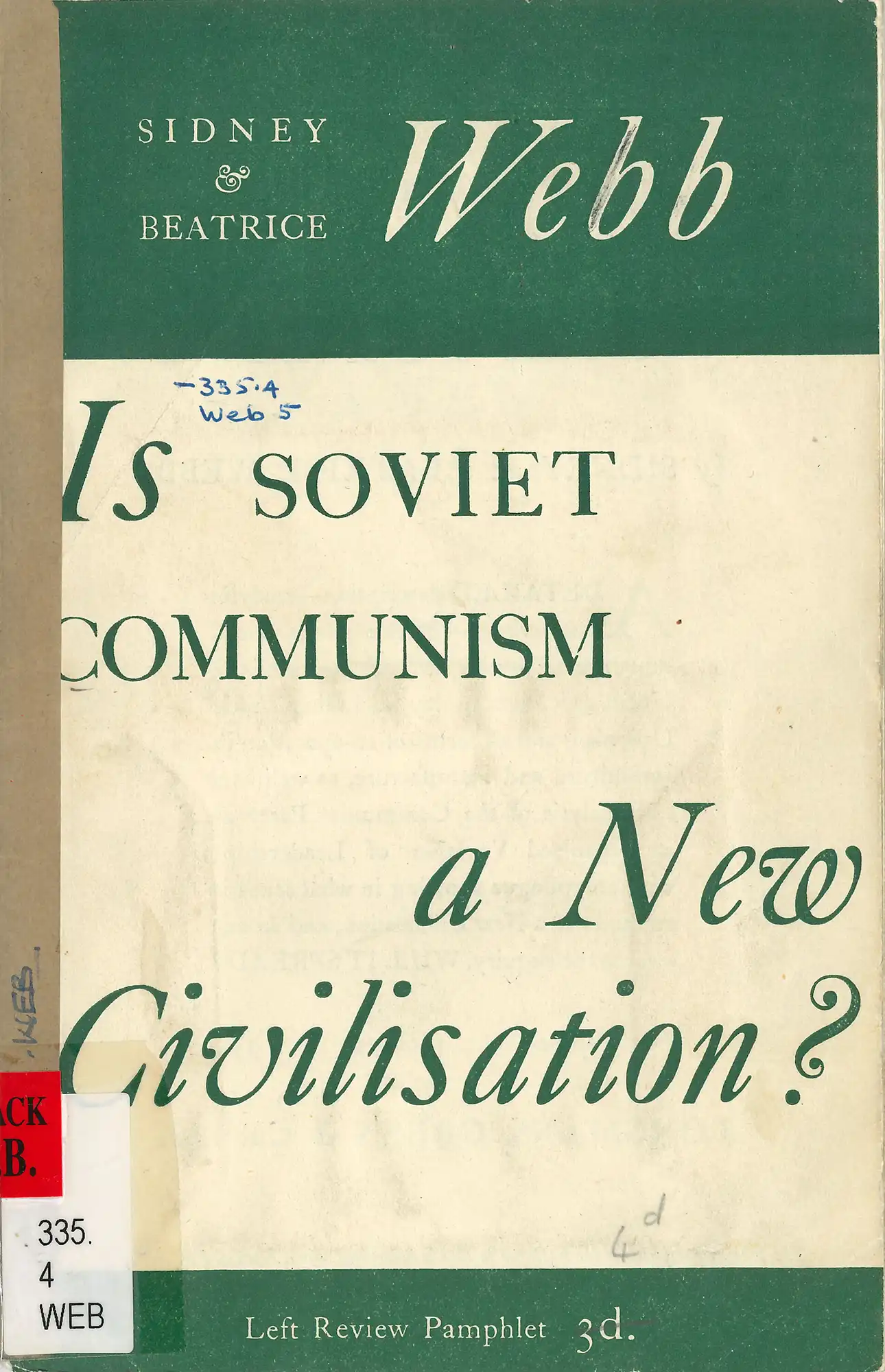
Sidney and Beatrice Webb, Is Soviet communism a new civilisation? London: Left Review Pamphlet, November 1936. 335.4 WEB

Sidney and Beatrice Webb, Is Soviet communism a new civilisation? London: Left Review Pamphlet, November 1936. 335.4 WEB
Open image in new window
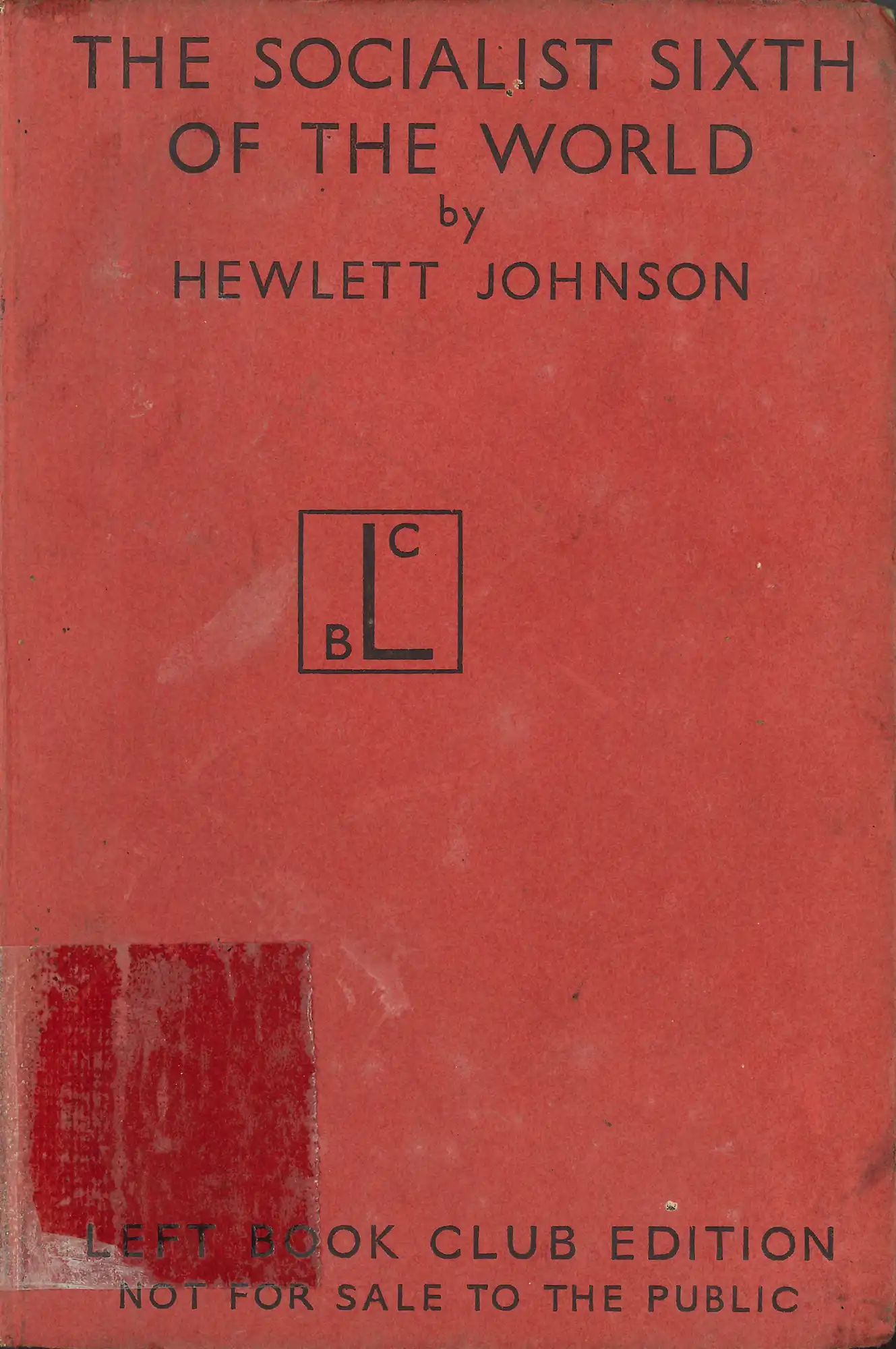
Hewlett Johnson (The Dean of Canterbury), The socialist sixth of the world. (1939). LBC 947.084 JOH
The Very Rev. Hewlett Johnson (1874-1966), the infamous ‘Red Dean’ of Canterbury, was an unapologetic ‘tankie’ to the end of his life [i.e., a Stalinist, who continued to support the Communist Party of the Soviet Union even after they sent in tanks to quell the 1956 Hungarian Revolution]. Dean of Canterbury from 1931 to 1963, he was a regular speaker at pre-war LBC meetings advocating for an alliance between Britain and the USSR against Hitler. The Socialist Sixth of the World is mainly a work of pure propaganda for the Stalinist regime. Even though he stayed three months in the USSR, he copied large sections verbatim from the state propaganda he was supplied with. It was immensely popular, going through 22 editions and selling several million copies.

Hewlett Johnson (The Dean of Canterbury), The socialist sixth of the world. (1939). LBC 947.084 JOH
Open image in new window
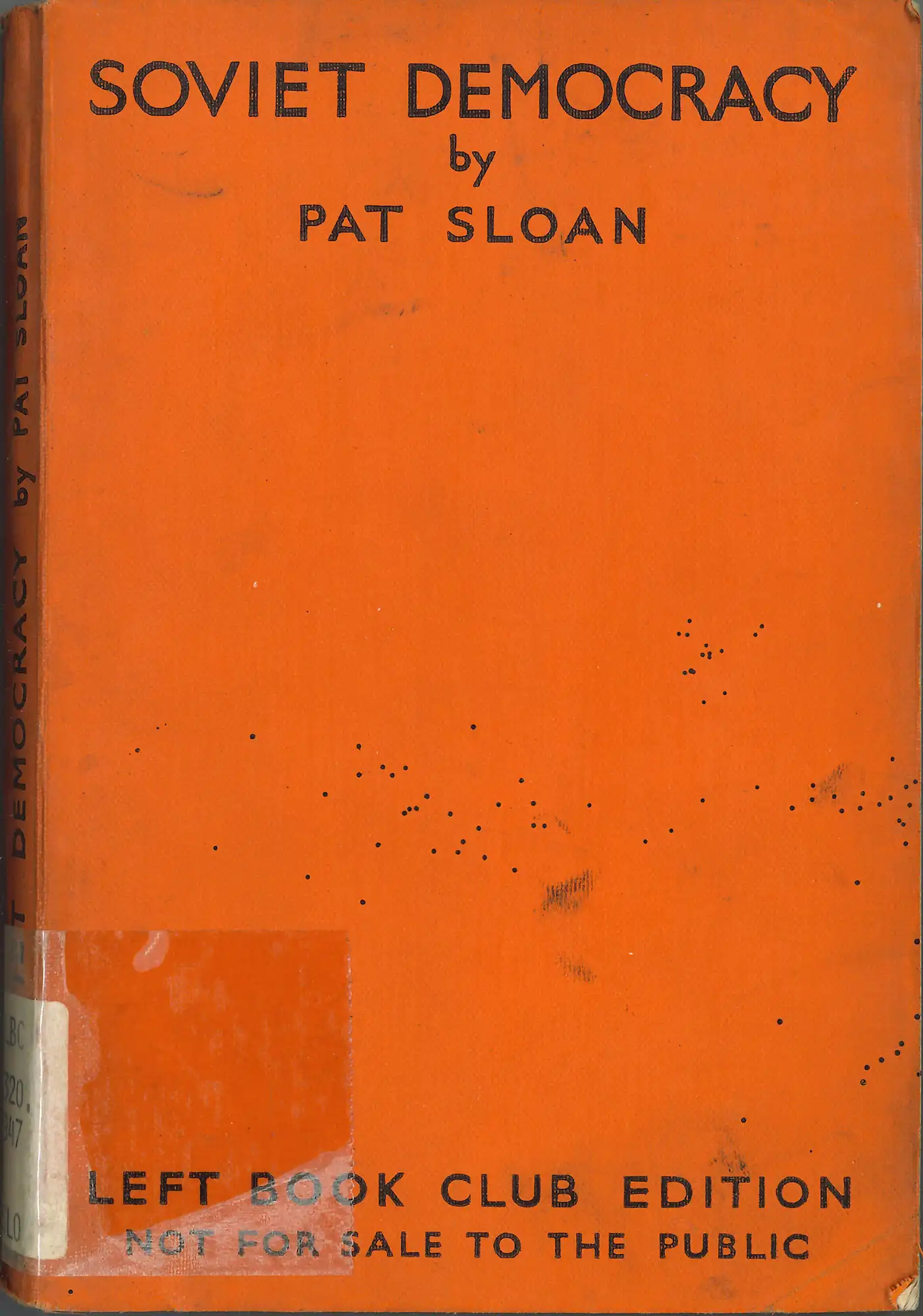
Pat Sloan, Soviet democracy. (1937). LBC 320.947 SLO
Curiosity took Pat Sloan (1908-1978) to Russia in 1931 to see it for himself. He ended up working there off and on until 1937 and joined the Communist Party of Great Britain in 1933, remaining a member till his death. Sloan wrote several books on the Soviet Union and became general secretary of the British-Soviet Friendship Society in 1951. The word ‘soviet’ means ‘council’ and refers to the workers’ councils, a form of direct democracy in workplaces and localities, that first sprung up in the 1905 Russian Revolution. Following the October Revolution, the soviets were increasingly subordinated to the Bolshevik party and eventually a one-party state. Lenin’s slogan, ‘All Power to the Soviets!’, was thoroughly repudiated by the Bolshevik regime in practice. By the time Sloan was writing this apologia for Stalinism, the possibilities created by revolutionary working-class democracy, established for a brief period following October, were a distant memory.
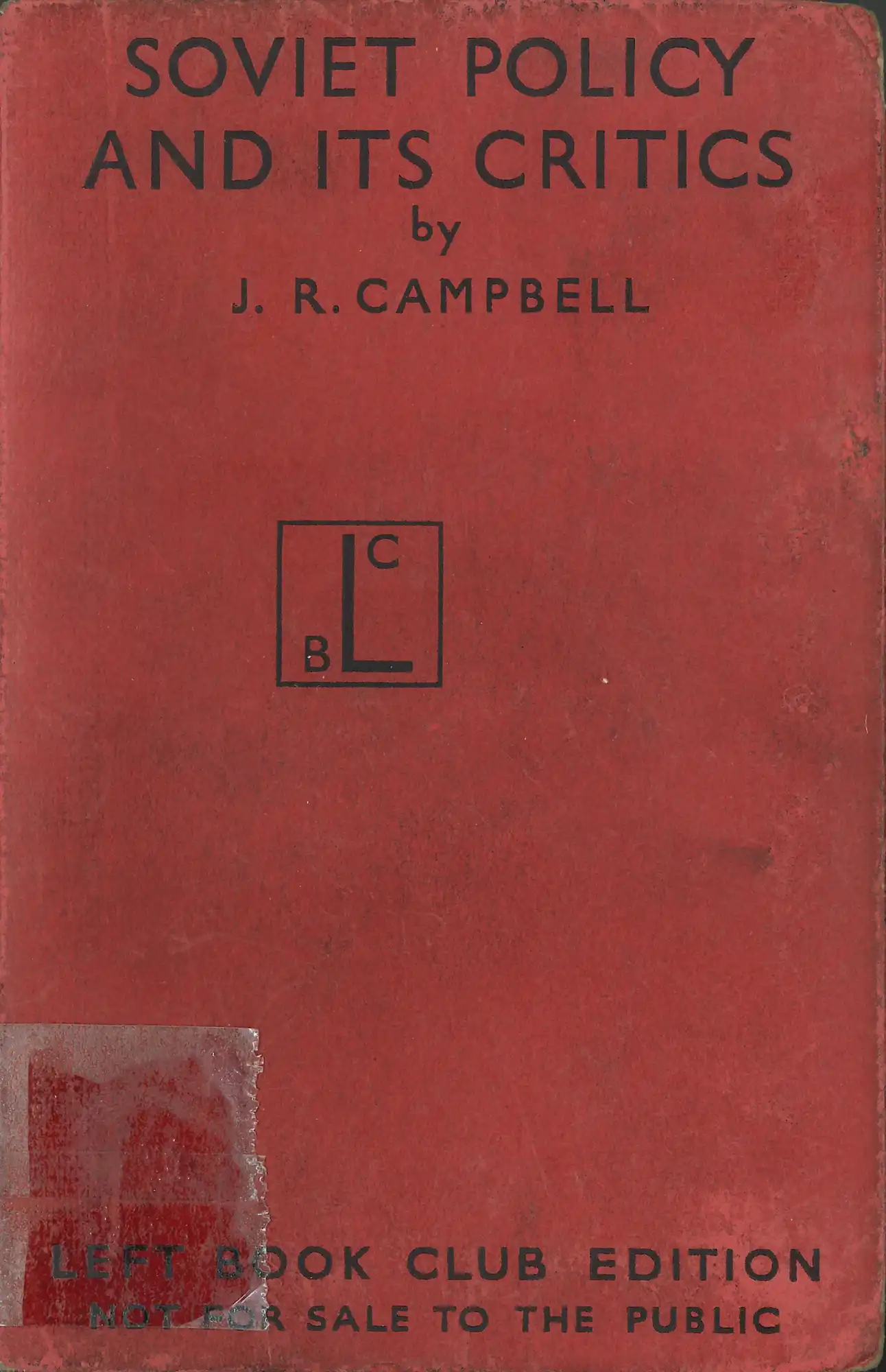
J.R. Campbell, Soviet policy and its critics. (1939). LBC 947.084 CAM
Born in Paisley, John Ross Campbell (1894-1969) was a committed journalist who became active in the Clyde Workers Committee after returning from the war in 1918. A British Socialist Party member since 1912, he and fellow Red Clydesiders John McLean and Willie Gallacher helped found the Communist Party of Great Britain in April 1920. He became editor of the CPGB’s newspaper Worker’s Weekly and famously was charged with inciting mutiny in 1924 after publishing an ‘Open Letter to the Fighting Forces’ that called on soldiers to turn their weapons against their class oppressors. By the 1930s Campbell was a loyal supporter of the Stalinist regime and an enthusiastic apologist for the Moscow show trials. In Soviet Policy and its Critics, he vilifies Trotsky and argues the trials were genuine.
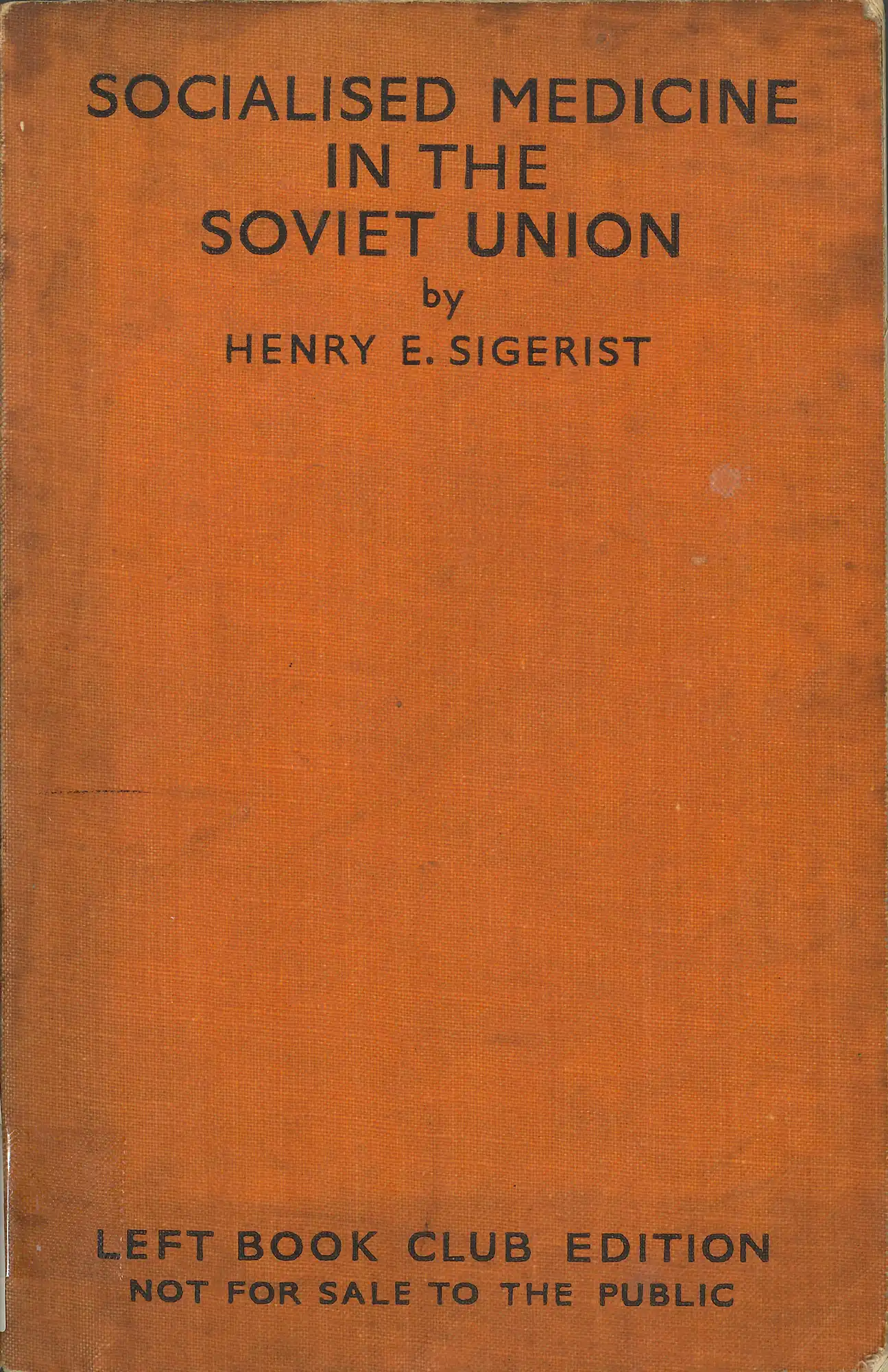
Henry E. Sigerist, Socialised medicine in the Soviet Union. (1937). LBC 614.2 SIG
Swiss medical historian Henry E. Sigerist (1891-1957) was Professor of the History of Medicine at Johns Hopkins University in Baltimore from 1932 to 1947. His account of the socialised medical system in the Soviet Union was highly influential. His advocacy of the Saskatchewan’s state-funded healthcare system led to it being adopted throughout Canada. His definition of health in the book strongly influenced the 1948 World Health Organisation’s definition of health as ‘a state of complete physical, mental and social well-being and not merely the absence of disease or infimity’.





